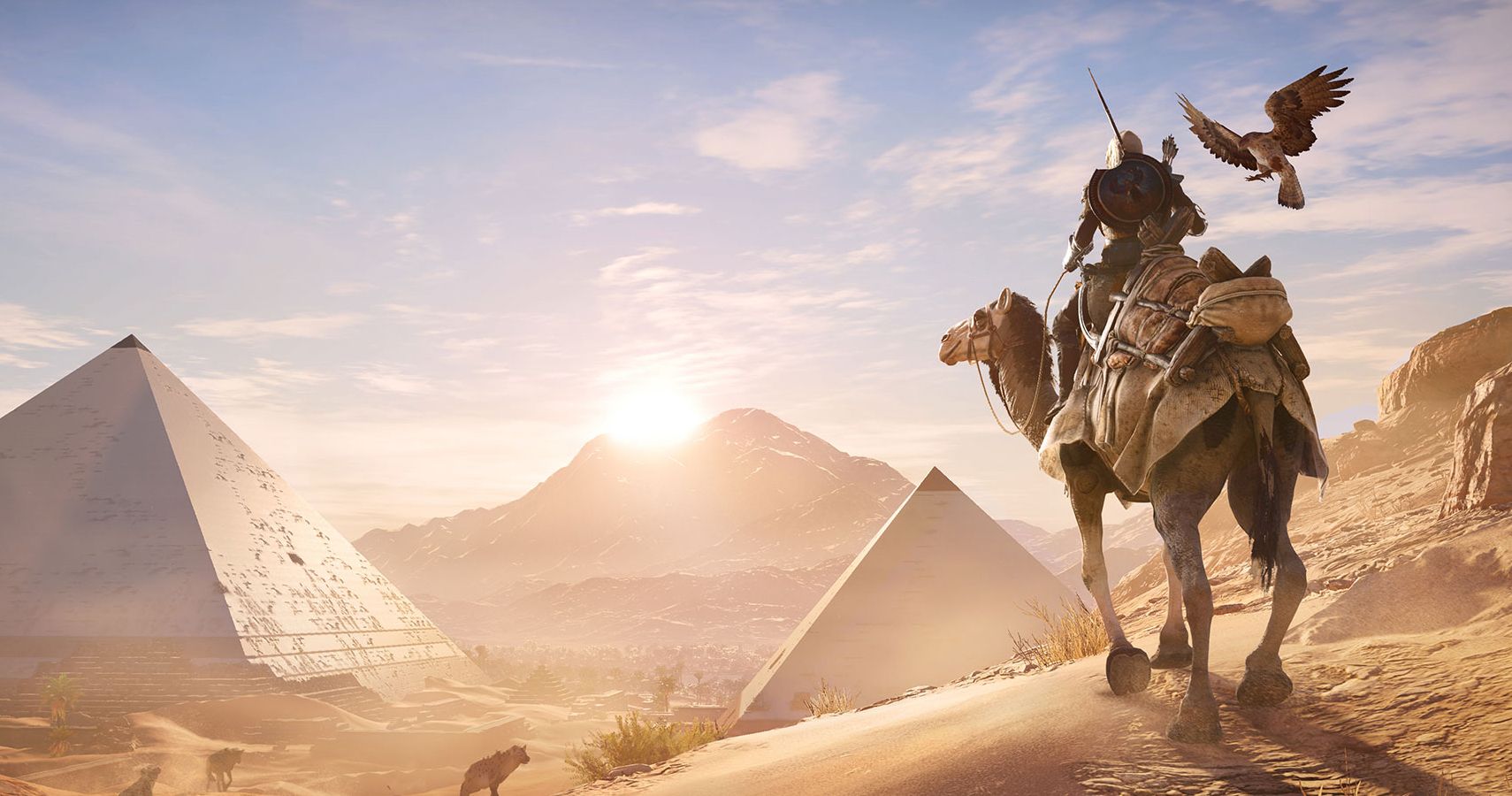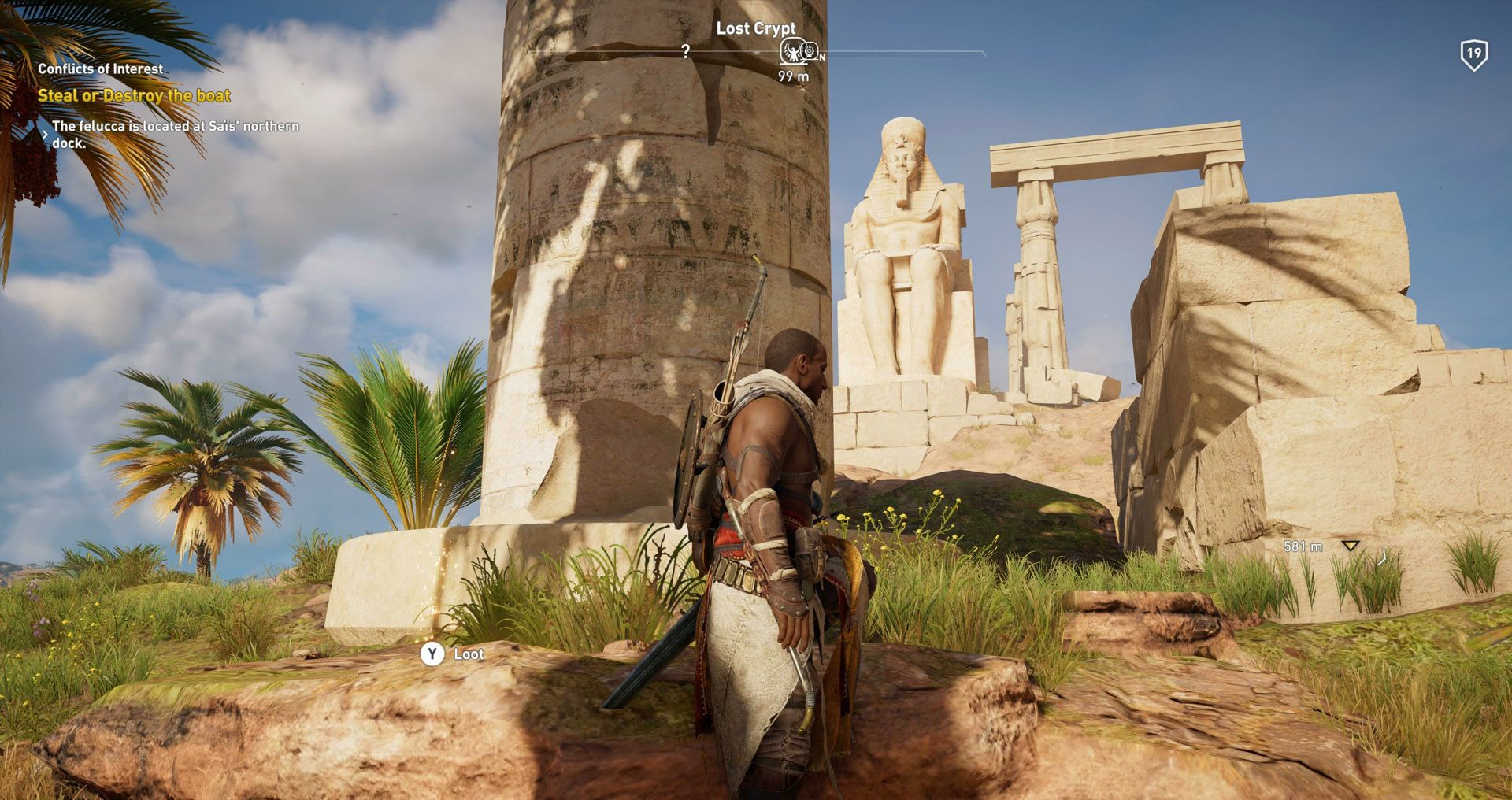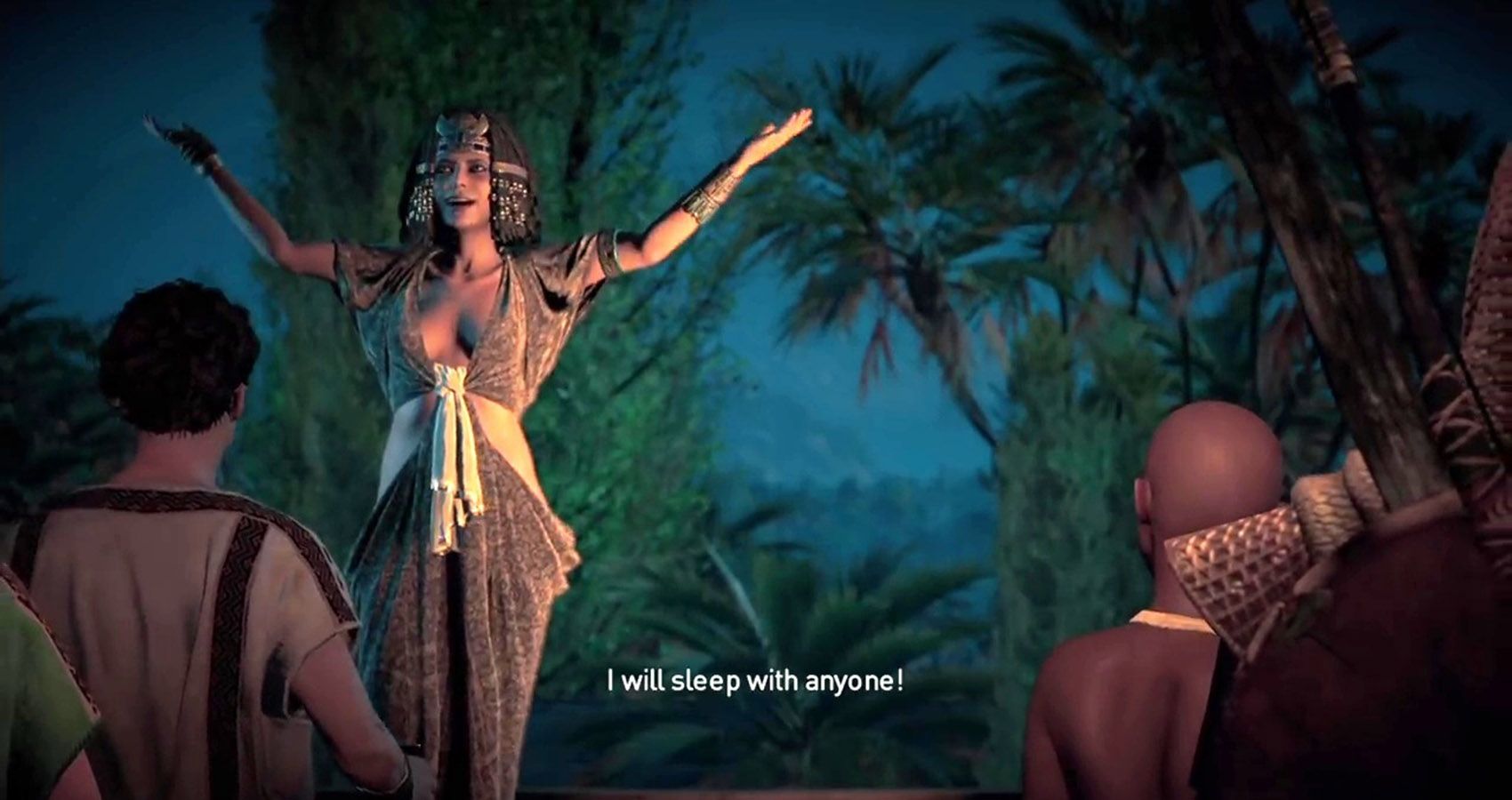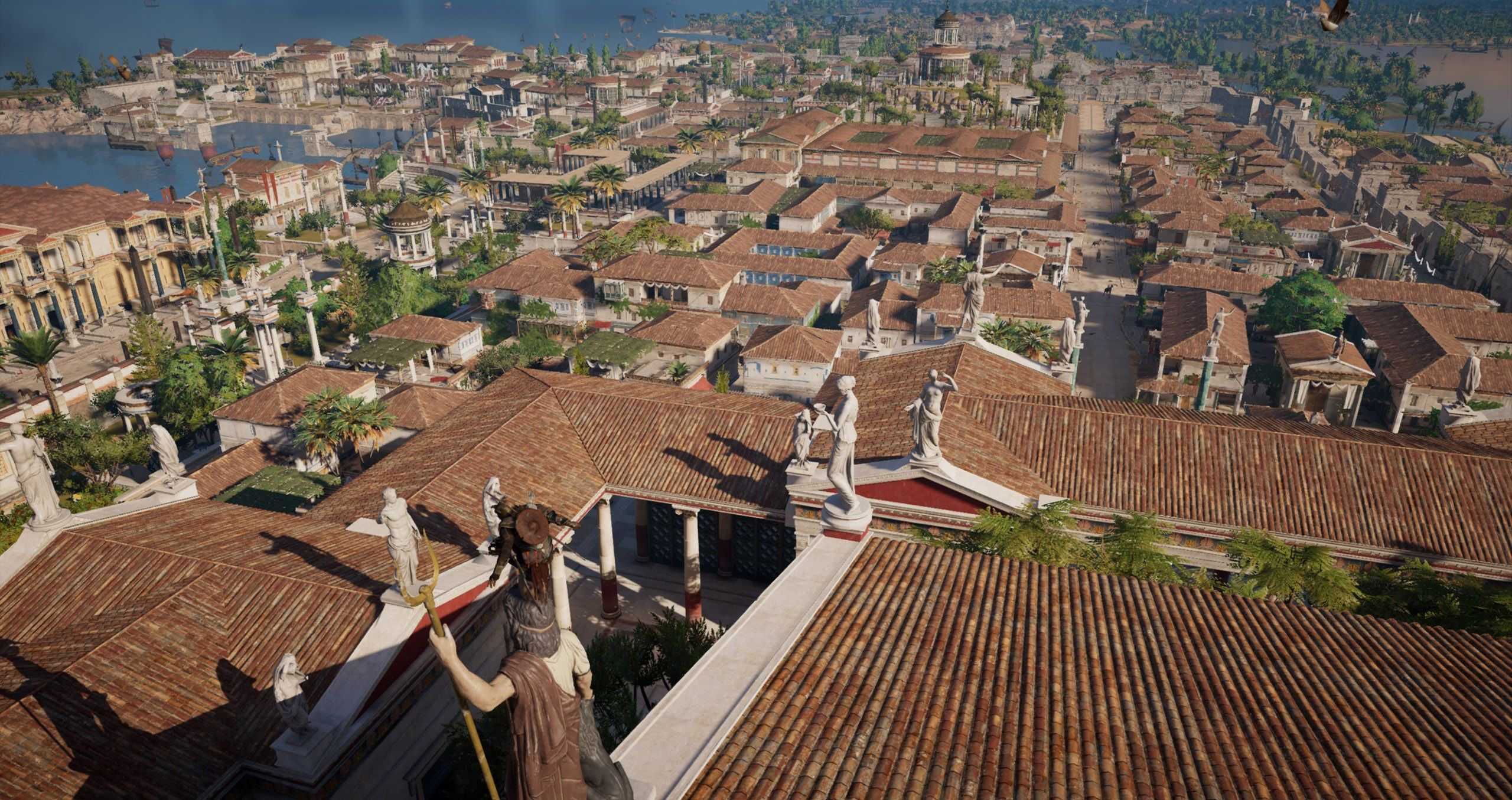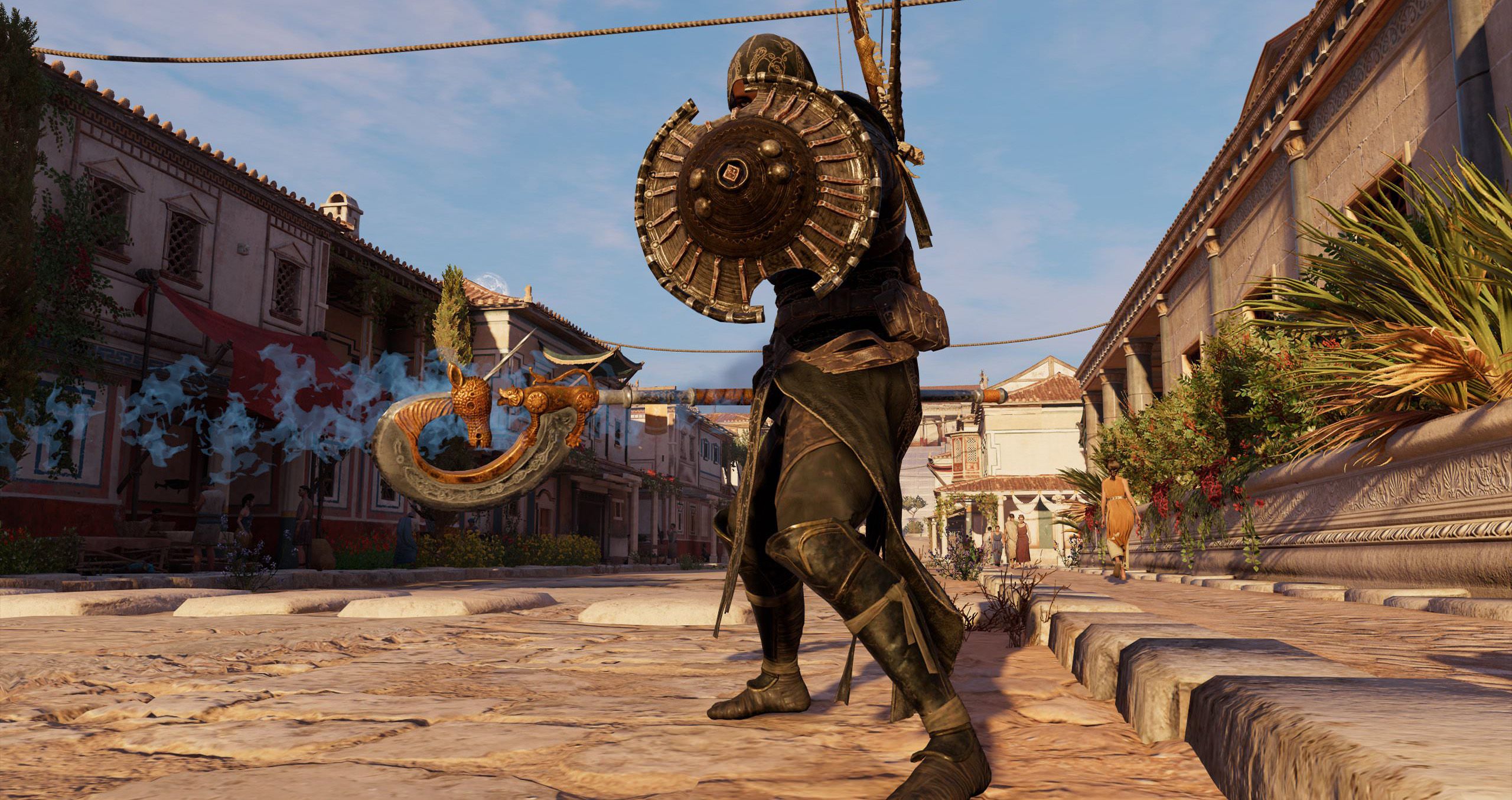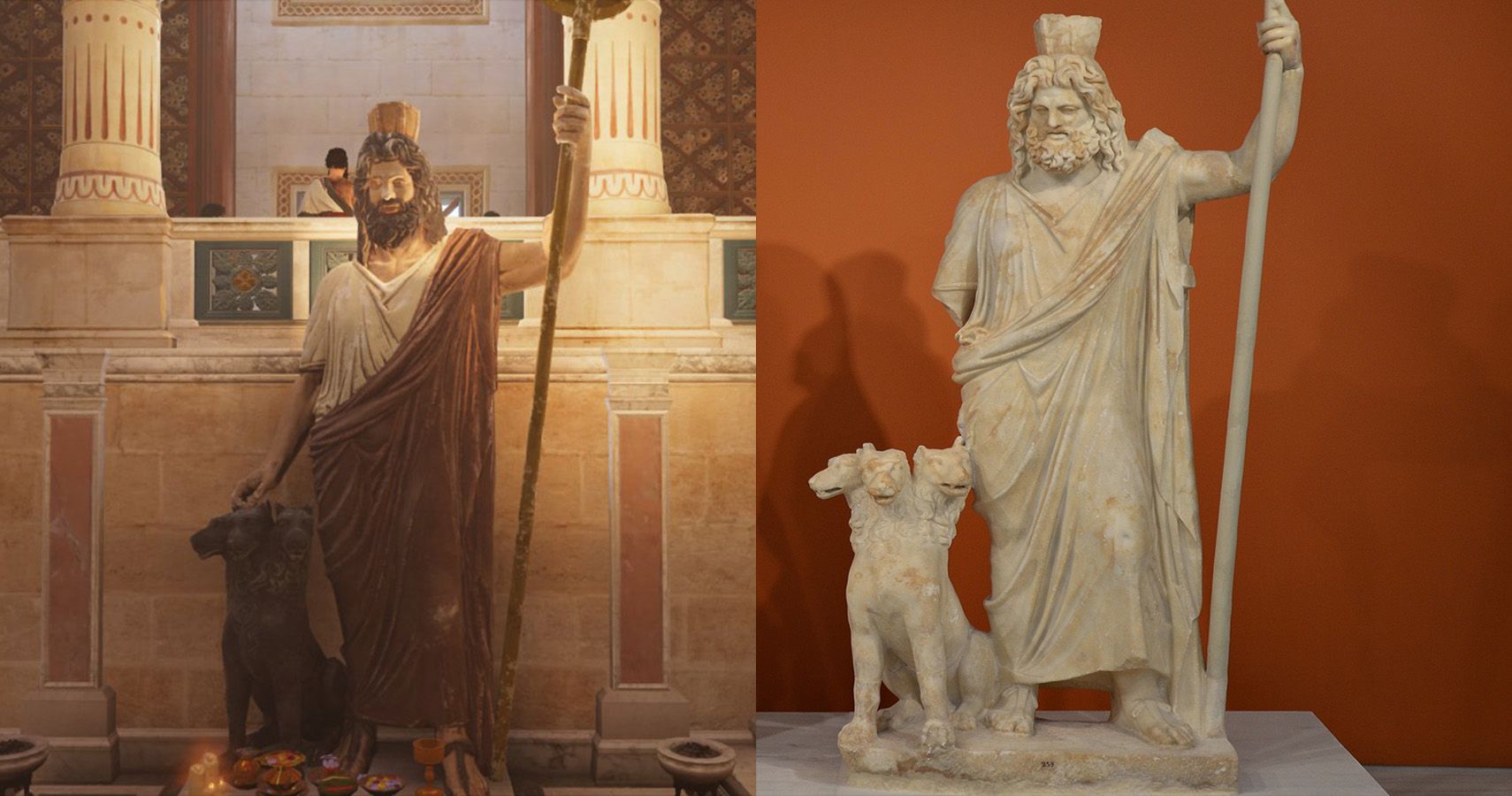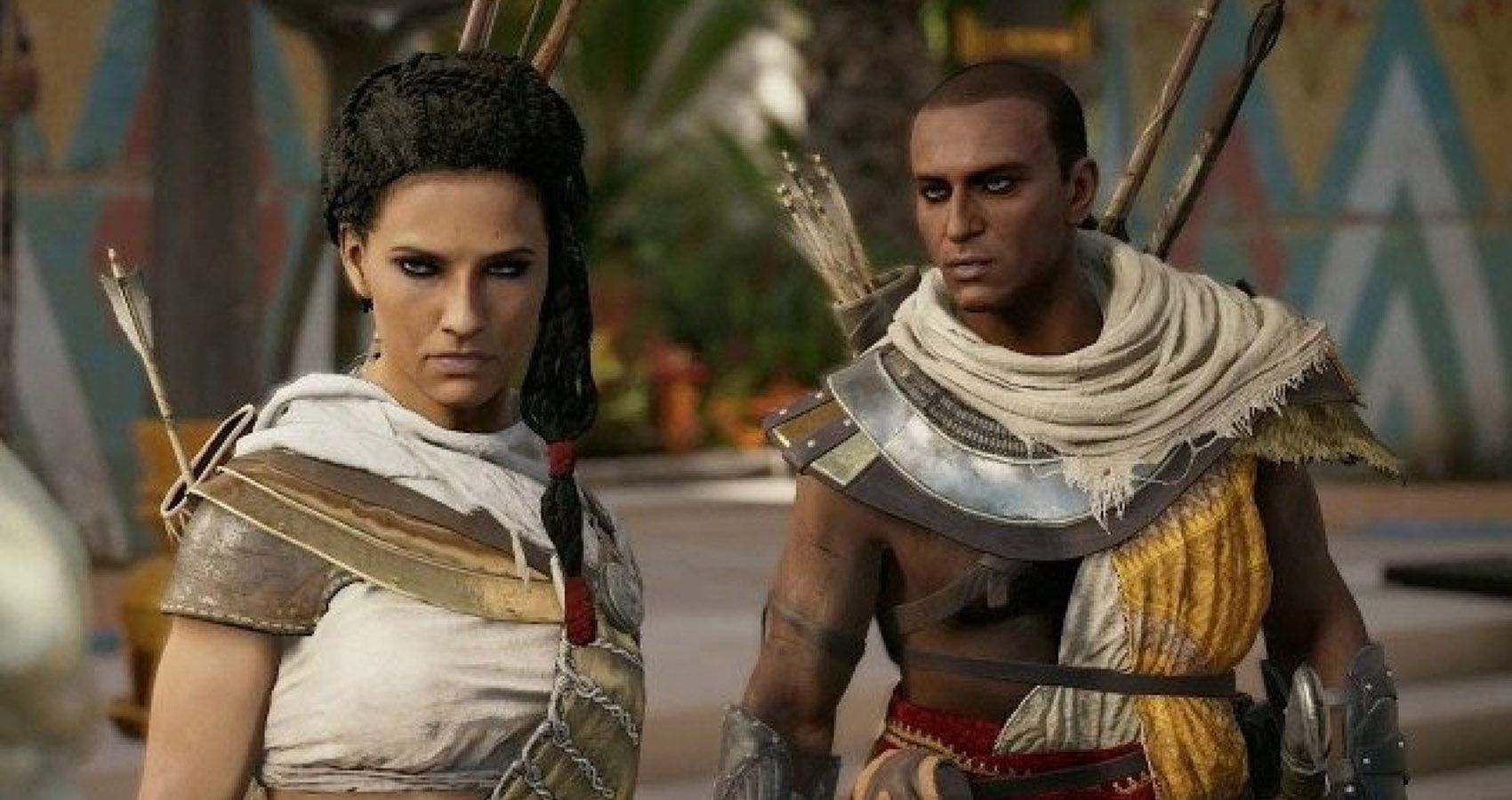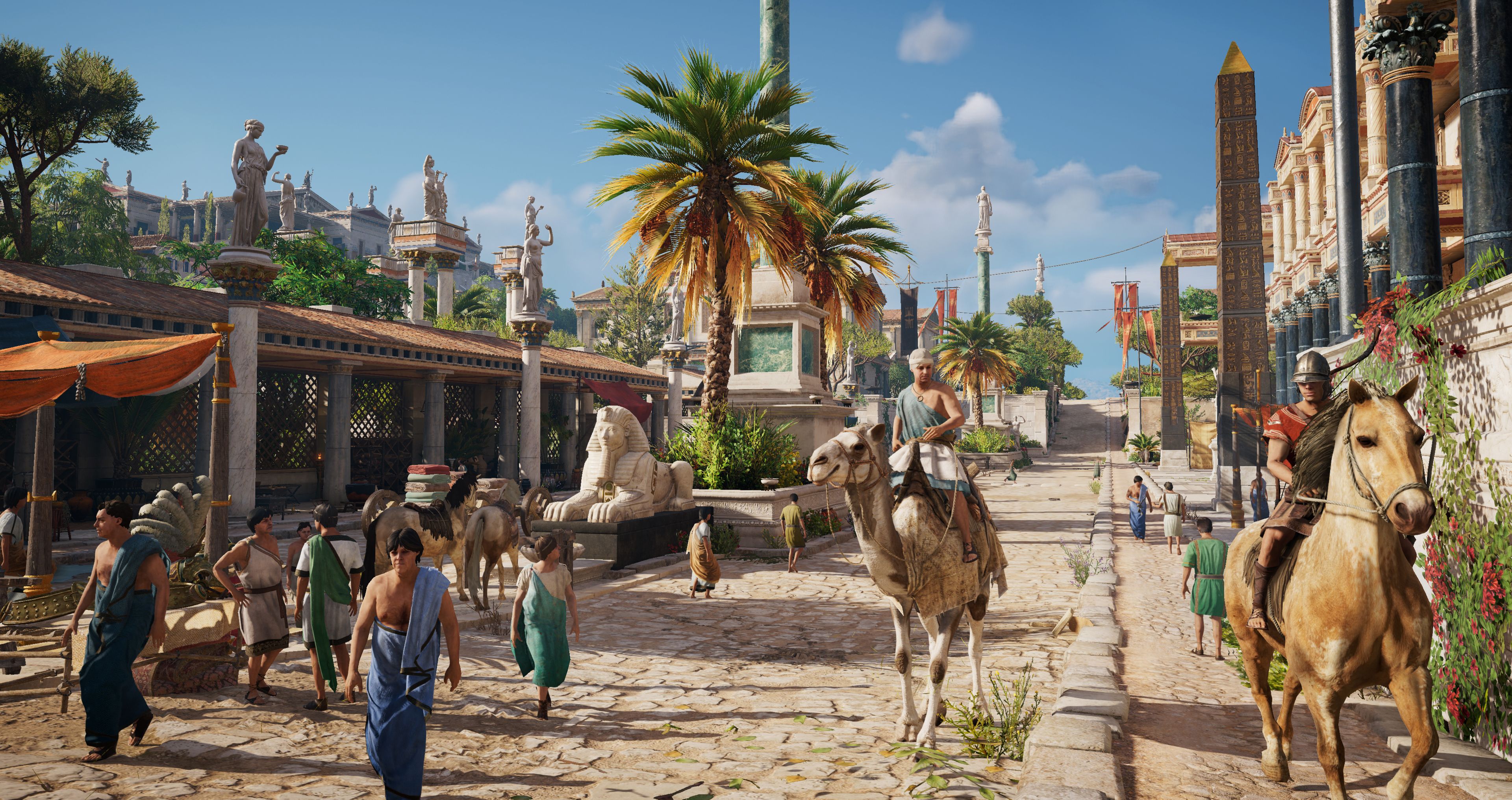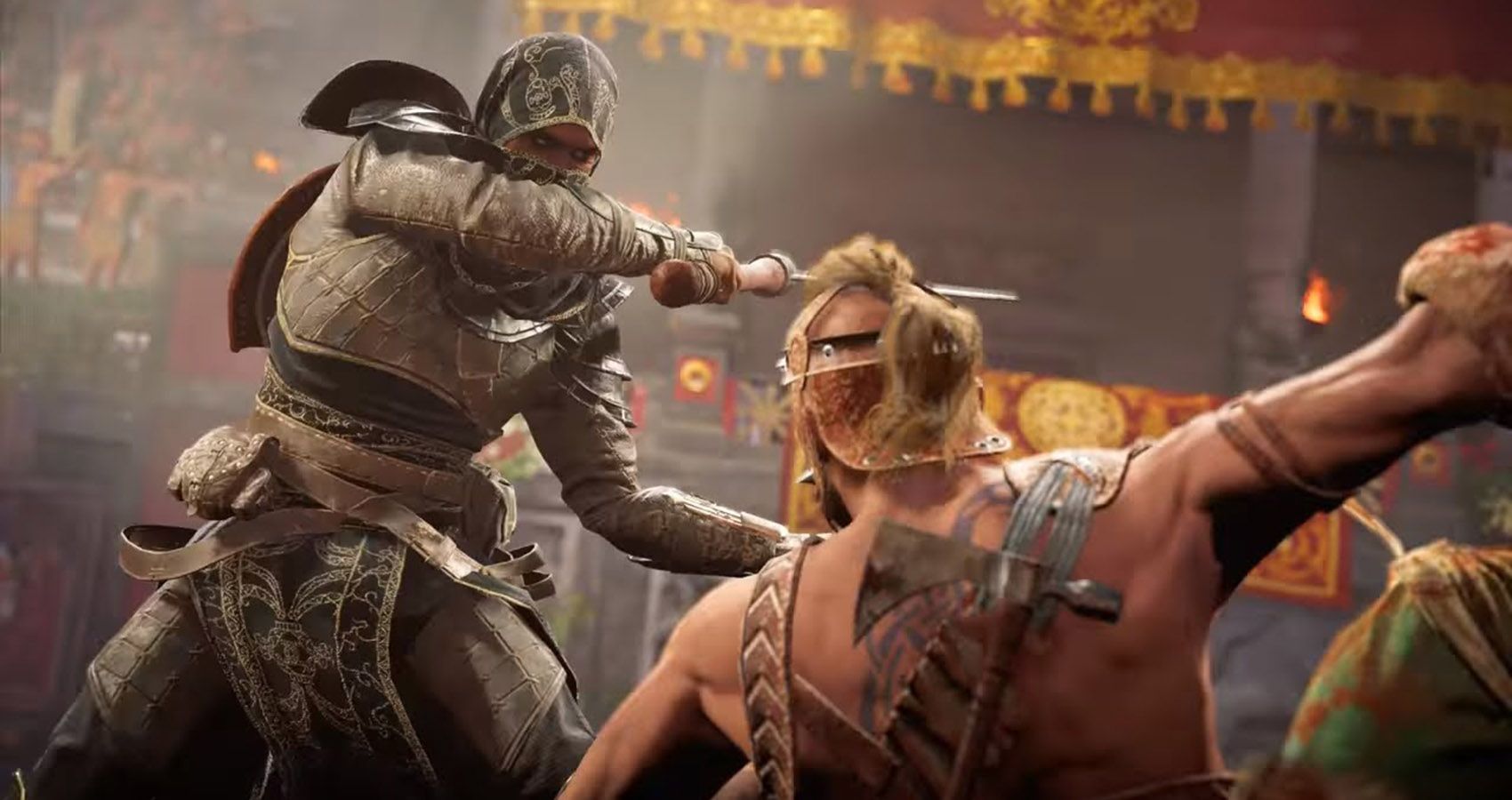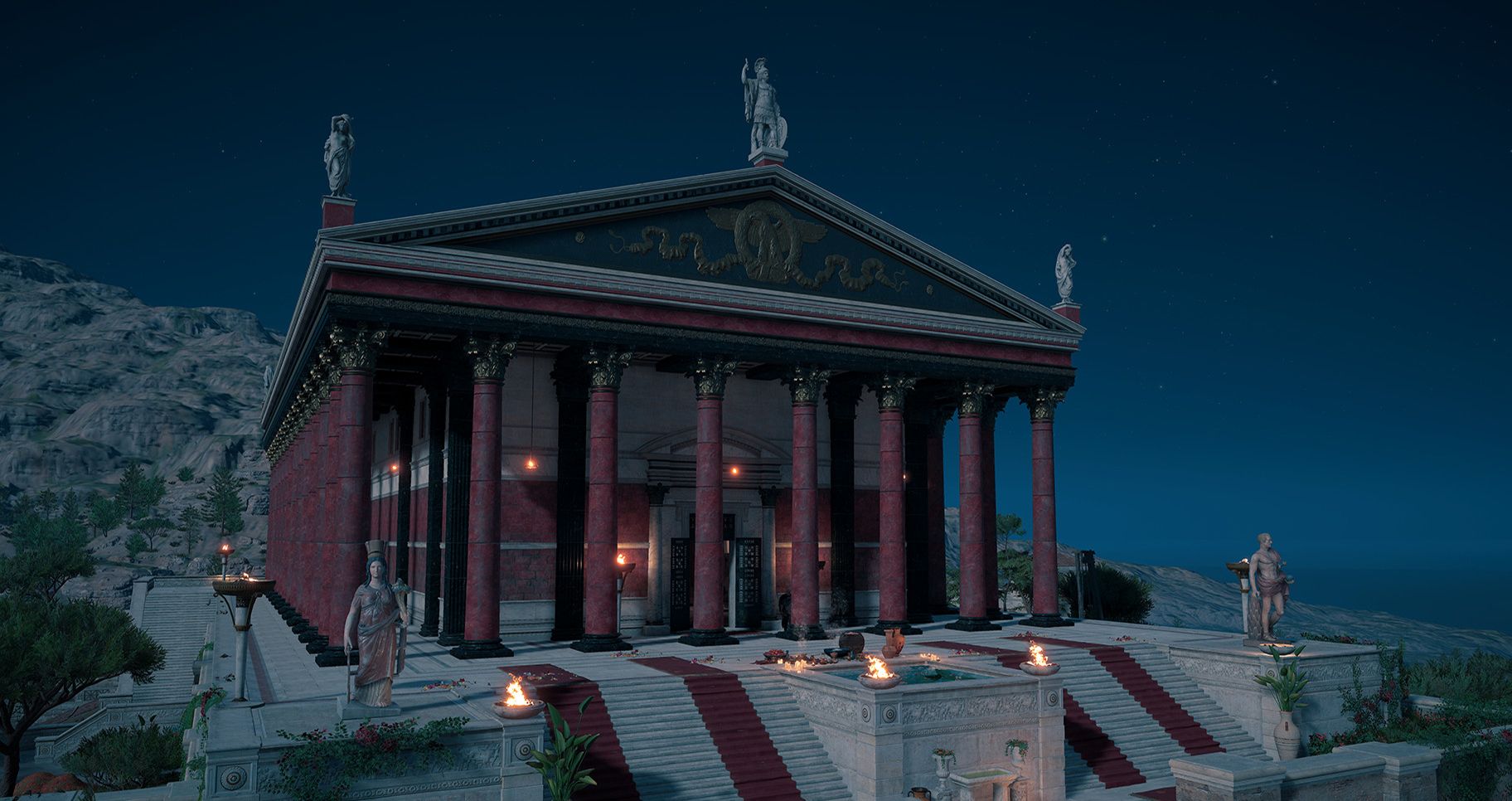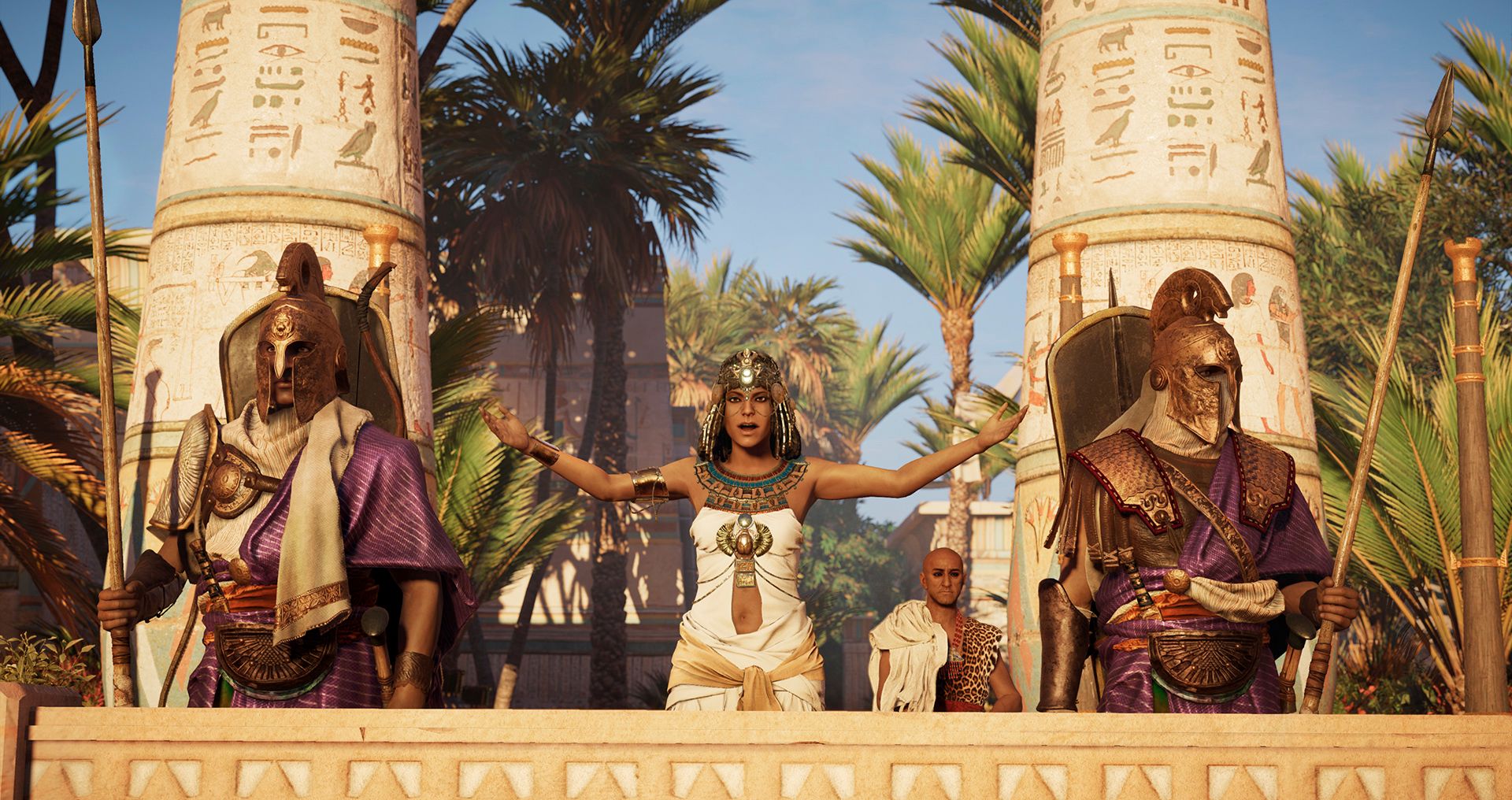In the making of Assassin’s Creed Origins the developers worked hand in hand with historians to ensure their game was as historically accurate as possible, as they’ve done with their other games in the series. The result is a rich game that allows players to explore a well depicted ancient world.
Even so there are some mistakes the made their way into the final product. Whether it’s out of necessity for game design, plot purposes, or the historians they hired weren’t sure and the developers had to make a judgment call there are some things that are incorrect.
10 Accurate: Ruined Structures
Many fans were bewildered by the presence of ruins in the game and thought it was an oversight by the developers as all buildings would have been new at the time. It turns out these ruined and dilapidated buildings are actually historically correct.
Given the numerous occupations and retreats in Egypt’s history, many buildings and entire areas were abandoned. If political leaders took up residence in a different town or enemy nations focused their attention somewhere else than once-prominent cities would be forgotten and slowly become abandoned as the populace and money shifted elsewhere.
9 Aren’t: Cleopatra’s Promiscuity
In the game Cleopatra is perceived as a promiscuous woman who sleeps with men on a whim, take the scene where she puts out an offer to sleep with any man present if they were willing to be executed the next day.
In reality, Cleopatra was much more reserved in her sex life. In fact, the sex lives of many prominent women like her were seen as an important tool for achieving power and alliances so they reserved their affections for politically opportune moments. Many historians believe the myth of Cleopatra’s promiscuity was actually propaganda by Caesar for political purposes.
8 Accurate: Architecture
The architecture as displayed in Assassin’s Creed: Origins is incredibly accurate with historical accounts. For example, the Egyptian villages littered with mud-brick houses are accurate as mud-bricks would have been the most abundant building material in Egypt.
In Greek cities, there were marble buildings, though they were reserved for the wealthy or elite given how costly they were to produce. Unlike the single-story Egyptian buildings, these Greek structures would have been multiple storied houses with numerous features. Sure there a little more prominent in the game’s Alexandria than they would have been in real life, but it’s darn close.
7 Aren’t: Weapons
This one is a bit complicated as Assassin’s Creed Origins includes many weapons that would have been present at the time, but by and large there are so many that wouldn’t have been it warrants inclusion here.
Warrior bows that fire multiple arrows, heavy blades taller than a man, and intricately decorated weapons with jewels in the haft are some of the weapons that would not have existed in Egypt in ancient times. This was likely a design choice for the purpose of being an interesting game. In reality, Bayak using a Khopesh would be correct but the Mushussu would never have existed.
6 Accurate: Statuary
The sculptures and statues are perhaps one of the most accurately depicted features in the entire game. For instance, the Serapeum of Alexandria in the game contains numerous recreations of the sculptures found in today’s museums. Many of the statues portrayed there are either direct recreations or based on real-life statues.
What’s interesting though is that the in-game statues are often depicted wearing clothes and painted in realistic colors. It turns out this is historically accurate as today’s blander single-colored statues are a result of aging and restoration efforts and would have been similarly colored and dressed in antiquity.
5 Aren’t: Racial Tensions
Surprisingly the racial tensions seen in the game between the elitist Greeks and the lowly Egyptians isn’t an accurate depiction of history. Sure there would have been some ethnic-based disagreements, but the powerful empires would often adopt certain aspects of other cultures to be better received by those people.
For instance, Greek citizens were known to give their children Egyptian names and Egyptians were frequent consumers of Greek products. Both cultures were shown to have adopted each other’s gods and religious practices either celebrating them separately or pairing them together in some way. The portrayal of Greek elitists and subservient Egyptians is also inaccurate, Greeks were as likely to be common farmers and there were many Egyptian nobles with authority over them.
4 Accurate: NPC Garb
While Bayak’s and the royalties’ clothing isn’t entirely accurate the clothing worn by the more common NPCs definitely is. In ancient times in Egypt linen was produced from flax and could be used to create lowly sack-cloth or be finely processed into sheer linen worn by the upper class.
Running around barefoot was common despite the existence of sandals, jewelry would have been gaudy pieces made of shells, beads and precious stones and reserved for the richer members of society. Even the wide-brimmed straw hats are accurate as they would’ve been brought over by the Greeks and used by both Greeks and Egyptians.
3 Aren’t: Bloodsports
This one is a result of prevailing myths and was most likely a design choice by developers to make the game more interesting. The arenas Krokodilopolis and Cyrene let the player participate in bloody battles for gold and glory in gladiatorial fashion.
In reality, these to the death battles were reserved more for Rome and even then are a little embellished. Both Greece and Egypt would have participated in less bloodthirsty sports like boxing, archery, or javelin throwing. In fact, today’s Olympics are based on the displays of athleticism in Greece’s arenas in ancient time.
2 Accurate: Religion
The game does a great job portraying just how important religion was to both the Egyptians and Greeks in ancient times. The priests were often seen as both spiritual leaders and civil mediators and administrators.
Tourism would’ve largely revolved around the temples as it does in the game and the mummified cats for sale would’ve actually been a common part of ancient society given their significance in Egyptian religion.
1 Aren’t: Soldier’s Armor
The soldier’s in the game are depicted wearing mail armor or large iron cuirasses and this simply isn’t accurate. These types of armor would’ve been immensely uncomfortable in Egypt’s heat and these soldiers would instead be wearing linen cuirasses with linen skirts for protection.
The majority of the helmets are admittedly in line with the traditional style of those times, but the Corinthian helmets worn by the royal guard and their purple robes would not have been present and is inaccurate.

